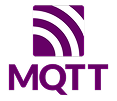BLE Connect
Real-Time Control, Reliable Connectivity
Transforming Emergency Lighting Management
From manual testing to automated intelligence - see how BLE Connect revolutionizes building safety with cutting-edge IoT technology.
The Challenge
Manual Testing: Labour-intensive inspections across multiple facilities
Compliance Issues: Inconsistent record-keeping leads to safety gaps
Scalability Problems: Growing facilities outpace manual management
Our Solution
Manual Testing: Labour-intensive inspections across multiple facilities
Compliance Issues: Inconsistent record-keeping leads to safety gaps
Scalability Problems: Growing facilities outpace manual management
Intelligent Features That Make The Difference
Automated Testing
Luminaires test themselves automatically with scheduled intervals
Self-Healing Mesh
Network adapts dynamically to device failures and interference
AES-128 Security
Enterprise-grade encryption protects all communications
Real-time Reports
Generate compliance reports instantly with live data
Built With Modern Technology
Scalable architecture designed for enterprise IoT deployments

Svelte
Frontend

Symfony
Backend

API Platform
Backend

Python
Backend

MySQL
Database

MQTT
Infrastructure
Architecture Highlights
Frontend (SvelteKit)
Fast, reactive dashboard for real-time asset management and testing visualization
Backend (Symfony)
RESTful API with Symfony Messenger for asynchronous IoT communication

"Working with Everbit on BLE Connect was a positive experience. With Wirepas being a new protocol in the UK and our system concept pushing industry boundaries, the project required them to expand their knowledge and use a problem-solving approach. They adapted well to the challenges and delivered a functional solution. Communication was clear throughout, and their technical input was very helpful. Overall, a solid team to work with on IoT development."
Euan Sellars
Design Team Lead

Measurable Impact
Real results across 30+ deployment sites
100%
Automated Testing Coverage
No manual inspections required
95%
Time Savings
Compared to manual processes
99.8%
Network Uptime
Self-healing mesh reliability
Before BLE Connect
After BLE Connect
Ready to Transform Your IoT Project?
Let's discuss how we can build cutting-edge solutions that solve real-world problems, just like we did with BLE Connect.